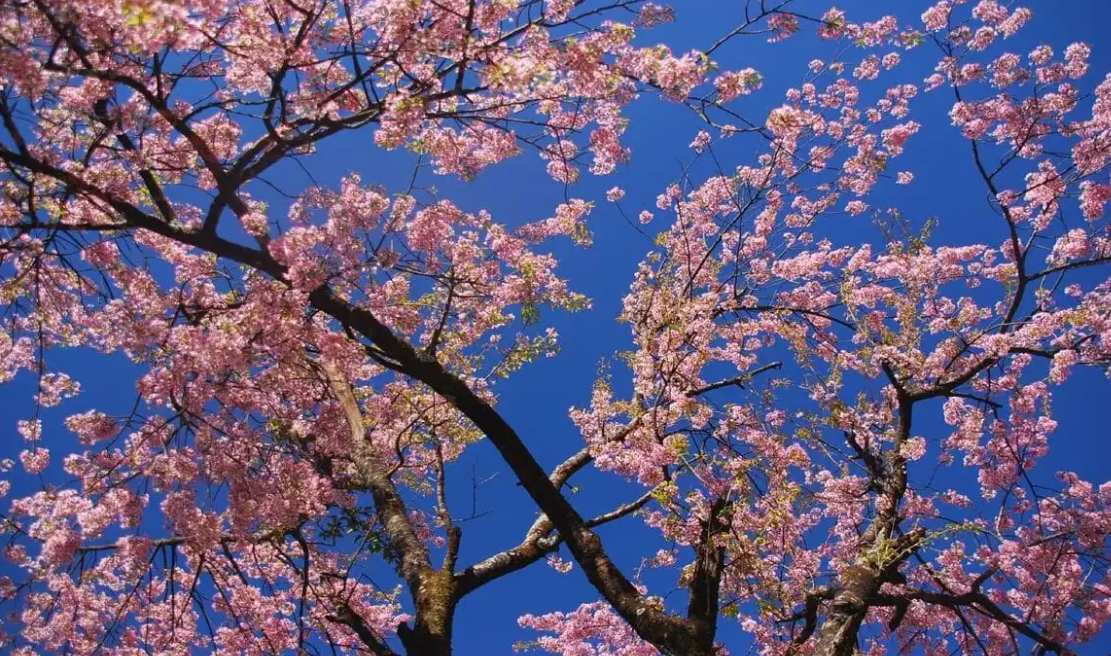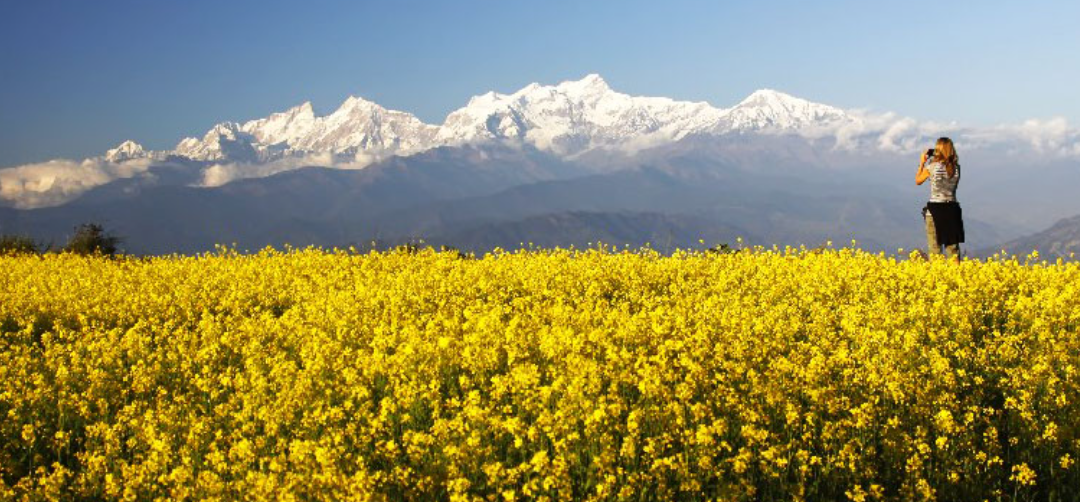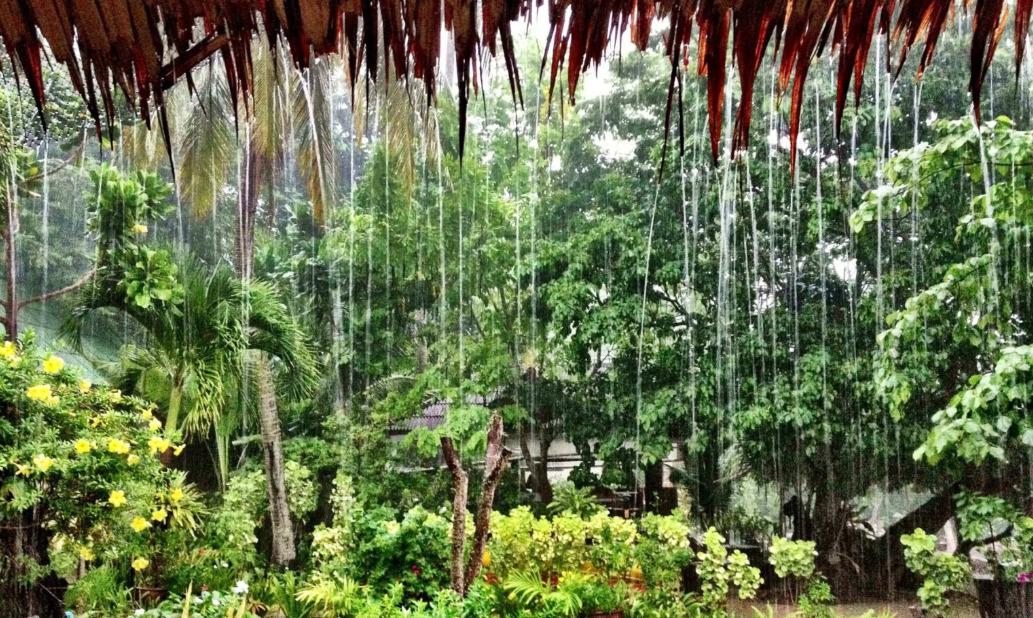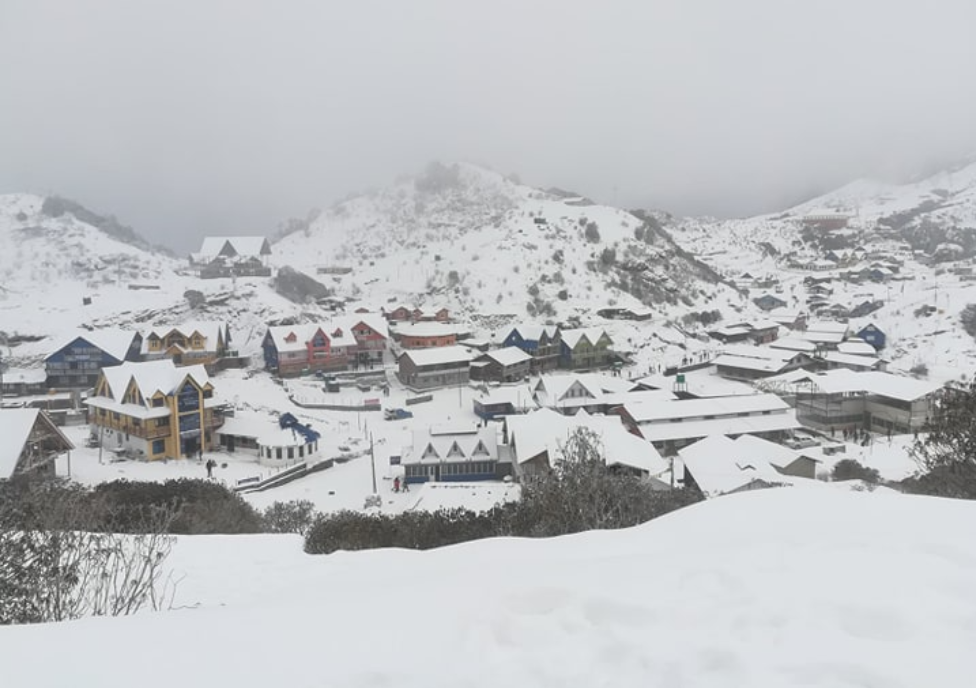Nepal boasts beautiful scenery. However, the weather in the high Himalayas can be unpredictable, but at the same time, it is equally fascinating. To ensure that your trip to Nepal, especially the high altitude, is relaxing and joyful, you need to understand the seasonal variations of Nepal. Our guide on Nepal weather will allow you to select the ideal time for your adventure. Examine the distinct climate of the different seasons and months in Nepal.
| Season | Months | Average High (°C) | Average Low (°C) | Rainfall (mm) | Highlights |
| Spring | March-May | 27 | 12 | 50 | Rhododendrons bloom, pleasant weather for sightseeing |
| Monsoon | June-August | 28 | 18 | 300+ | Rice planting celebration, lush landscapes in rain shadow areas |
| Autumn | September-November | 25 | 13 | 30 | Dashain & Tihar festivals, clear skies, ideal trekking season |
| Winter | December-February | 19 | 3 | 30 | Fewer crowds, occasional snowfall in higher regions, clear skies (except snowfall). |
Spring (March to May)
Spring is the peak travel season in Nepal. The weather is pleasant, and the temperatures are mild throughout the country. Spring is suitable if you are searching for a high-altitude experience amid wildflowers. In spring, you can see the mountains clearly and unhindered, and the colors along the way enhance the attractiveness of the entire trip.

Autumn (September to November)
Autumn is another popular travel season in Nepal. In addition to having pleasant autumnal temperatures, the weather is clear. Autumn is the greatest time of year to see the mountain views and varied landscapes. You will come across the autumn foliage taking over the landscapes and witness many festivities during your stay in Nepal.

Monsoon (June to August)
If you want to escape the high-season crowd, then Nepal's monsoon season is ideal for you. However, the weather conditions during this season can be challenging. You should expect heavy precipitation and stay alert, as the risk of landslides and route closures are at an all-time high. The cities slow down when it rains heavily, but the trekking paths in the Himalayas are full with green plants and blooming wildflowers.

Winter lasts from December to February
Heavy fog makes life in the Terai area hard, but the slopes and mountains of Nepal are quite cold. Heavy snow and temperatures that drop below freezing can make trekking hard. In the winter, though, the trails are covered in snow, which makes the scenery look amazing. If you want to tackle the circuit trek in the winter, you'll need to get some extra gear and safety gear ready.

With this information, you can deal with Nepal's weather and plan an amazing trip across the nation.

